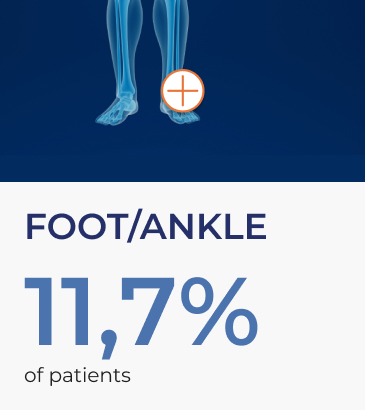WHAT IS OSTEO-
ARTHRITIS?
Osteoarthritis (OA) is the most common degenerative joint disease and can affect both small and large joints. It is characterized by the progressive deterioration and loss of cartilage in the joints6.
Osteoarthritis is one of the main causes of joint pain and can cause significant impairment of mobility and quality of life in patients12.
The prevalence of osteoarthritis has increased globally due to aging and overweight populations13.
It is estimated that about 18.0% of women and 9.6% of men over the age of 60 worldwide suffer from symptomatic OA12.



Osteoarthritis
can be
PRIMARY:
results from a combination of risk factors such as age, obesity, genetic and environmental factors6.
SECONDARY:
stems from recognized causal factors, such as trauma, surgical interventions on joint structures, and joint abnormalities at birth6.
What is osteoarthritis
characterized by?
During osteoarthritis, the synovial fluid inside the joints loses its viscoelastic properties due to a reduction in the concentration and molecular weight of the hyaluronic acid it is composed of1.
This results in suboptimal protection of the joint, leading to the progressive deterioration and wear of the cartilage and to changes in the surrounding structures, particularly the bone2.
The fundamental clinical signs of osteoarthritis are pain, stiffness, and progressive functional limitation, which may be associated with deformities of varying degrees.



LOCALIZATION
From some international studies, it has emerged that in the adults ≥65 years of age,
the hands is the site most clearly affected by osteoarthritis (60%), followed by the knee (33%), foot and ankle (11,7%) and hip 5%15.
However, shoulder osteoarthritis is also very common, with radiographic evidence in 16.1%–20.1% of adults older than 6516, while the lumbar spine is affected by OA in 30% of men and 28% of women aged 55 to 64 years17.






